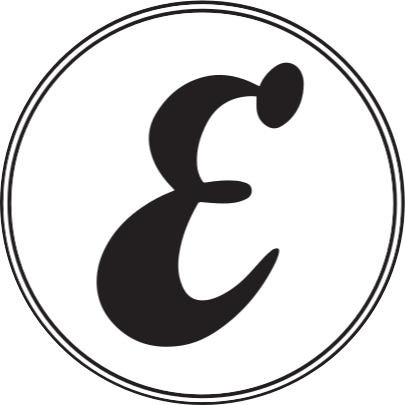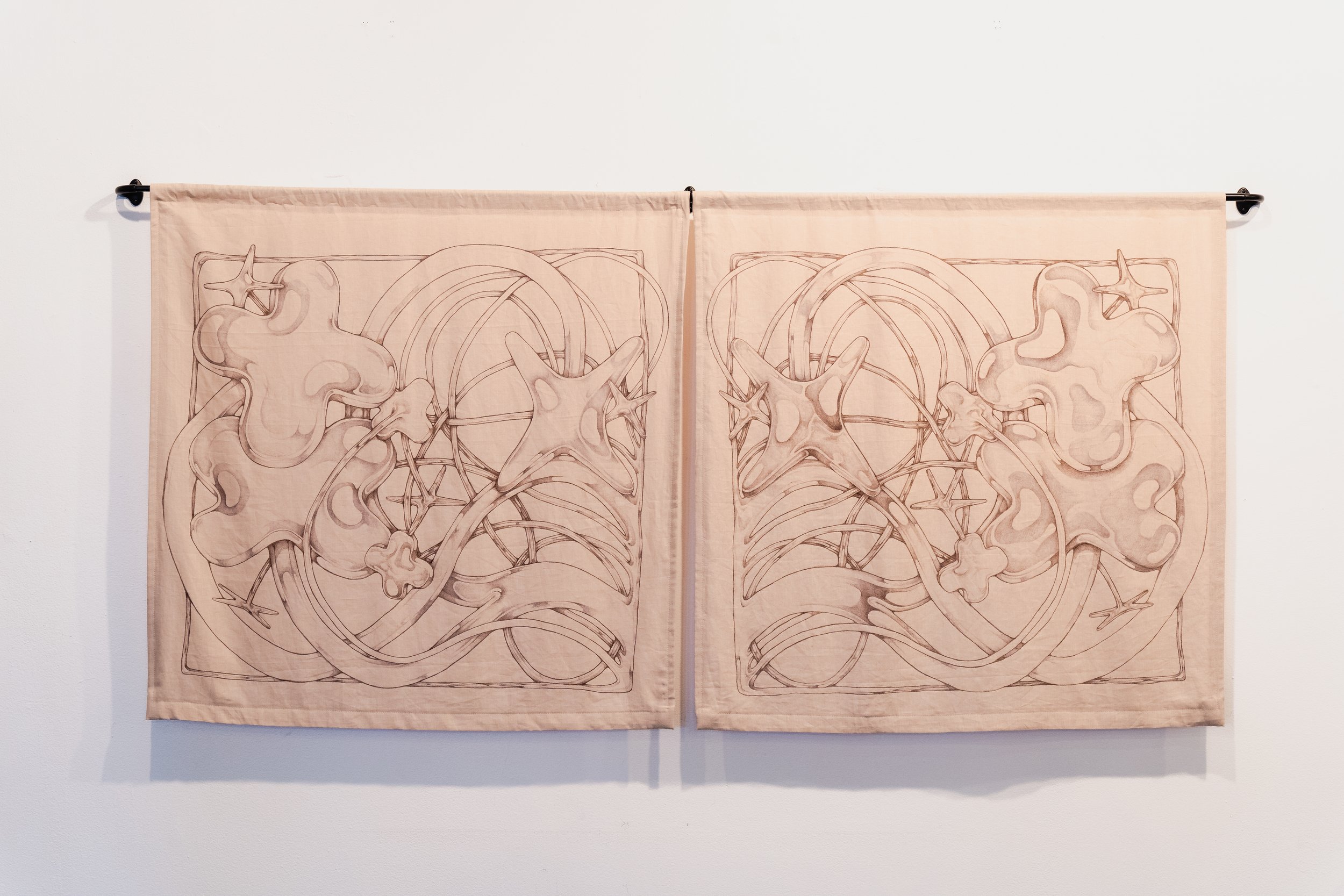Lee Romero
the intimacies of a clover
november 2024 - february 2025
lee romero
the intimacies of a clover
Two-storey houses lit like flowers,
beneath them I learned agony
and towards a land of joy as yet untouched
foolishly reached out a hand.
— “Pitch-Black House of Light” by Han Kang
“Did the fairies ever whisper in your ear, that a 4-leaf clover brought good luck to the finder?” - the first mention of a lucky four-leaf clover in an 1877 letter by an 11-year-old girl to St. Nicholas Magazine
The intimacies of a clover brings together the intricate webs and weavings of Chicago-based multidisciplinary artist and sewist, Lee Miko Romero. Framed by moments of catching oneself getting lost in thought, or dreaming of a flourishing spring in the dead of winter, the show is meant to capture the feeling of a cunning fox prancing through moss covered rocks to find a gem long-lost in the thicket.
In their first Chicago solo exhibition, the intimacies of a clover gathers all of Romero’s works and practices in one space: functional objects, personal trinkets, large-scale hand-stitched quilts evoking medieval tapestry. These objects have inhabited many ecologies: homes of friends, retail project spaces including TUSK, restaurants around the city, and at their studio. At Elastic Arts, they merge the comfort of home with the playfulness of nature; these works are often gifts to be shared with friends, loved ones, and they bring a sense of refuge and sanctuary, especially in the upcoming wintry days of Chicago.
There exists tightness and tension in many of Romero’s recurring motifs. Clovers proliferate beyond gated confines, an overgrowth that is comforting so long as one welcomes it, but also potentially suffocating in its plenitude. In both the quilted headboard and curtain diptychs, the clovers and stars evoke skeletal frames. Their lichen felted net, a kind of soft-footed trap, brings to mind the rhododendron bushes in Southern Appalachia, where walking passersby will lose themselves in the laurel hell’s repetitive thickets, unable to gain a sense of direction.
The motif of overgrowth is the nature that many of Lee’s works reference: both beautiful and lush, enveloping and unforgiving. Life exists within other life in a taut web, made visible in Molting, Mermaid Purses, and In Clover. As a frequent contributor for the School of Many Questions and as a Co-Founder of the micro risograph press, Paper Worm Studio, Romero’s investigations into the networks that we inhabit are deeply embedded within the Chicago arts community, reminding us that art, like everything else in life, cannot be undertaken alone.
What’s endlessly fascinating in Lee’s work is its relation to talismans. The hag stones, also called holey stones or adder stones, of the Monterey bay are a key fixture of Romero’s. In folklore, it is said that the stones possess magic and gift protective energy to the one who carries them, even thought to be portals or doorways. The clams that bury themselves in the sand can bore perfect circles in the holes, giving them this mystical quality. The small sculptures left behind by these mollusks carry prolonged significance as the rocks continue to be a source of protection or habitat for those that come after.
Enveloped in its own folklore, Lee’s hand-stitched quilts can also be placed visually within the context of medieval tapestries, known for their storytelling and richly symbolic elements. Used to depict myths and fables, these quilts show a timeless story of their own, of slowing down and rest, of slow labor.
The closeness and intimacy in their work is reflected through the handcrafted nature of Romero’s quilts and tapestries. Each is connected to touch: Lee references the unfolding of nature with hours and hours of needles piercing through fabric, each edge of a wave drawn precisely to crystallize into rigorous forms. The materials themselves that Lee uses also reflect a cyclical nature, with fabric scraps collected from work and from friends. There is a life to these pieces that stretches through their trade and sharing in the network of friends—unending life, marked by molting tenderness.
All gallery photos by Ricardo Adame
Related programming
Opening Reception:
November 17, 2024
Closing Reception:
January 26, 2025












































